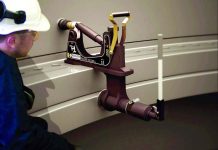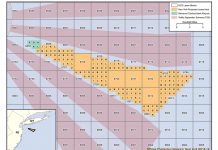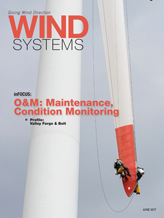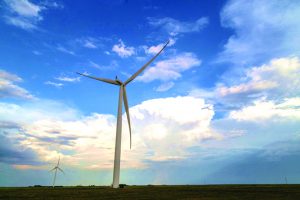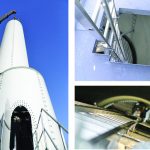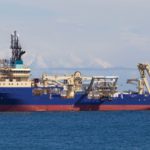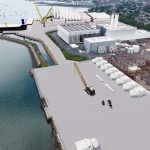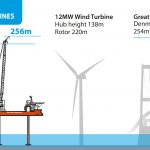DNV GL, the world’s largest resource of independent energy experts and certification body, has launched a revolutionary new joint industry project (JIP) to develop a Recommended Practice intended to de-risk the adoption of “twisties” and demonstrate the unitization of wind project cargo. The innovative concept is called “twisties” — a modular project-cargo transport frame system that is sea-fastened using container twist locks — and which gives the frames their name.
The increasing size and quantities of wind turbines installed offshore means that a change in requirements is needed for shipping project cargo between manufacturing and marshaling port facilities, and feeding-wind turbine installation vessels offshore. Conventional feeder vessel operations have introduced many challenges, including operational limits on wave heights and wind speeds. DNV GL has identified that a fast feeder vessel using a RoRo (roll on, roll off) method of logistics transfer can avoid both wave-limits and the tight wind-speed limits often associated with lifting blades offshore. It is this constant requirement for handling project cargo of a repeatable form, with bolted flange connections, that has brought about an industry desire to optimize and standardize transport logistics and sea-fastening arrangements.
The wind industry has made attempts at unitization, such as grouping three blade sets into a “unit.” Modular twist-lock, stackable blade racks are now commonplace on the decks of installation vessels. DNV GL has taken this concept and proposed a method for unitization using modular transportation and sea fastening frames based upon standard 20-foot cargo container twist-lock centers.
Transporting turbines and other wind-farm components using “twisties” is shown to significantly lower construction-program durations to “single season” phases. It also allows for greater quantities of turbines to be installed using a defined number of wind-turbine installation vessels. The concept demonstrates cost savings in some cases of above 25 percent compared to conventional installation practice.
“Bringing industry stakeholders together within this JIP, with the intention of standardizing wind-project cargo now, can reduce installation costs and ensure that the industry is equipped to meet the aspirations of COP 21 and those outlined by other groups, such as IABR’s ‘2050-An Energy Odyssey’ vision where 25,000 installed turbines would form a European mega project in the North Sea and create thousands of jobs in the offshore industry,” said Prajeev Rasiah, regional manager for NW Europe, Middle East & Africa, DNV GL.
“Establishing a JIP will de-risk the implementation of this technology and promote the unitization of wind-project cargo,” said Chris Garrett, senior offshore wind farms engineer, DNV GL. “This continues our commitment to reduce the cost of offshore wind, as outlined in DNV GL’s Offshore Wind Cost Reduction Manifesto. Understanding the technicalities of current wind-industry transportation methods enables us to demonstrate the vast benefits that a standardized unit approach will bring to the entire industry.”
Source: DNV GL
For more information, go to www.dnvgl.com
















